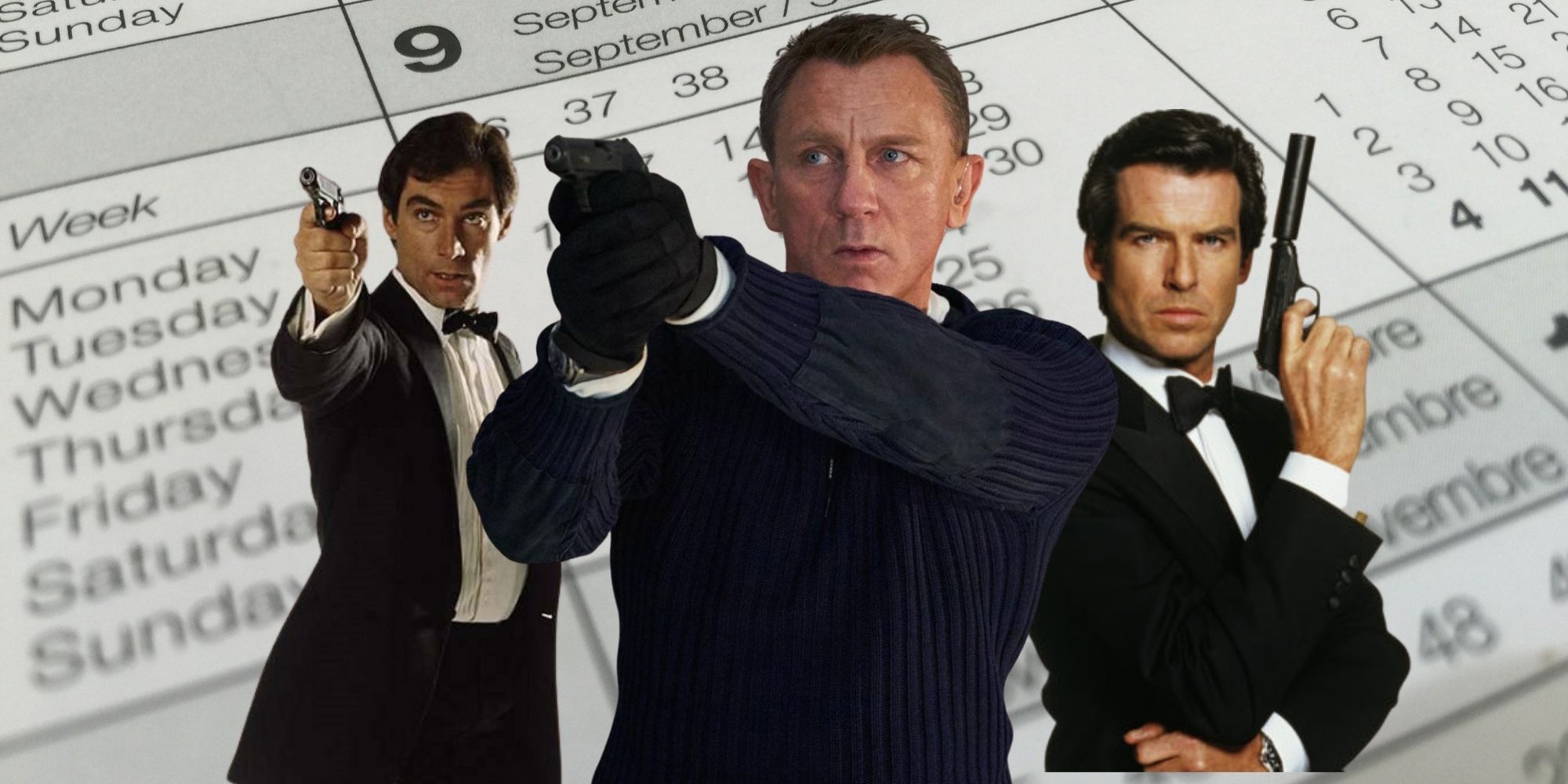Thanks to COVID-19, the delay of Daniel Craig's final outing as James Bond in No Time to Die now rivals the gap between the Timothy Dalton Bond movies and the revival with Pierce Brosnan. Drawing on a rich creative lineage, from the original Ian Flemming novels to modern cinematic realizations of his suave super-spy, this 25th installment in the Bond franchise has been a long time coming. But now that its postponement amidst the global public health crisis has extended audiences' wait to nearly six years, the question becomes: how will this long gap between sequential films affect No Time to Die's reception?
Following speculation that a new face for Bond was on the horizon, fans were assured this next film would be the last Bond film to feature Daniel Craig in the role of world-renowned British operative 007. With director Cary Fukunaga (True Detective, Beasts of No Nation) making his franchise debut, No Time to Die takes on the task of wrapping up the Craig Bond era which began in 2006 with Casino Royale and ends with this fifth appearance from its leading gentleman. Although the film represents the end of an era in that respect, it's assumed the role of a new beginning in others: the film represents Fukunaga's first time helming a project of this scale, promises to break from James Bond movie traditions, and will hopefully usher in a renewed era of theatrical releases.
But with the COVID-19 pandemic pushing films to release much later than intended, or in some cases to release on streaming platforms, the gap between No Time to Die and the previous Bond entry Spectre has grown to historical proportions. With its current slated debut of October 8th, 2021, the five years, 11 months, and two days represent the most time between Bond releases since 1989's License to Kill and 1995's GoldenEye. The difference there is that the latter was Pierce Brosnan's first film in the lead role, so its separation from its predecessor served to help redirect a franchise beginning a new phase. After No Time to Die's numerous release date delays, will audiences be able to pick up where 2015's Spectre left off for a finale?
Since the debonair agent's first foray into film in 1962's Dr. No, Bond movies have become a staple of remarkable regularity. Excluding the six-year and five-month break between Timothy Dalton and Pierce Brosnan's eras, no period of more than three years has transpired without a big-screen appearance from 007. That is, until the 2010s, when the most recent phase of Bond films slowed the pace of its release schedule considerably: four years between 2008's Quantum of Solace and 2015's Skyfall, another three until Spectre, and now approaching six years until No Time to Die following costly delays.
So will this gap between films in the same phase affect audience reaction? Perhaps the time spent without 007 will have dampened enthusiasm to see how Craig's saga ends. Alternatively, the long wait in combination with a presumable rush to return to theaters in a post-pandemic context could spell even greater success for the film. Daniel Craig himself remains optimistic, and for audiences yearning for some normalcy amidst truly unprecedented times, perhaps that's the best approach. And with its reputed consistency, the Bond franchise will hopefully deliver a major marker of normalcy with No Time to Die, whenever it eventually graces theaters.



